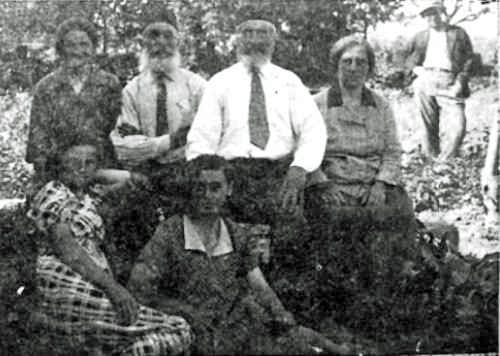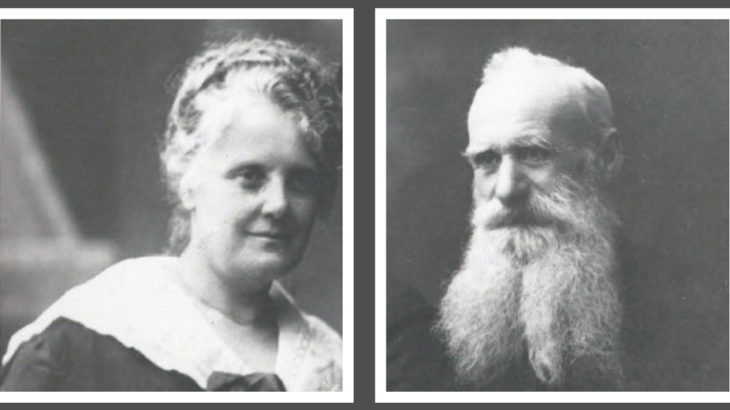by Howard I. Schwartz, PhD
One of the amazing experiences of my work on family history has been discovering new family that I didn’t know existed. I had one of those experiences recently, though it is tinged with loss as well.
About a year ago, I was approached by a man who had a third cousin DNA match to me on Ancestry. Long story short, I traced his grandfather and figured out the grandfather had gone to live in Wisconsin when he arrived in the States. The only person I knew who had gone to Wisconsin was the nephew of my great-grandfather, whom I had traced earlier. So, I looked up the nephew’s address and, sure enough, that is where the man’s grandfather had been headed. I pulled out an old handwritten family tree circulating in the family and pieced together that this man’s grandfather was the son of my great-grandfather’s sister. My great-grandfather was Tsodik Shulman. His sister Sarah’s married surname was Steinberg. My DNA match was Sarah’s great-grandson.
That discovery was quite striking all by itself, but back then we didn’t know if Sarah had ever made it to the US. I had looked and not found her. After searching on all the “Steinbergs” who arrived in the US, I stumbled on her 1926 passenger record. I knew it was her because her destination was her daughter, who had already arrived in Chicago.
But what really threw me for a loop was the name of the person she had said was her closest relative back in the shtetl Mlynov, where she had resided.
She wrote that her daughter “Matel Berger” was still back there. “Matel Berger,” I said to myself. “That name sounds familiar.” I need to give a bit of background to explain why that name was familiar.
Over the last six years, my family history search had expanded. I found that my family’s story was entangled way more deeply than I had realized with the stories of other families from the same shtetl. My family history had transformed itself into the history of the shtetl and what became of the families from there. I had spent months tracking down descendants of other families from the same shtetl, interviewing them, and asking them for stories and photos.
In that process, I had written a lengthy summary of the Berger family from Mlynov, some of whom came to Chicago and others who made aliyah in the 1930s. I knew the names of the Berger family who had remained in Mlynov, but I had no idea it had anything to do with my family.
I opened up my narrative on the Bergers and, sure enough, I found that a Faiwel Berger had married a woman named Matil. Bingo. I now knew that Matil Berger was the daughter of my great-grandfather’s sister. And Matil had a daughter named Batia.

I had just gained two new cousins I hadn’t known about. In addition, I had a photo of them without knowing they were family. You can see them in this photo. Matil is seated on the right side of the photo with her husband Faiwel Berger and in front of him is their daughter Batia.
The reason I knew this was them is because I had dived deep into the Yizkor book for Mlynov and had helped initiate a new translation. I actually knew quite a bit about this photo before I knew that Matil and Batia were related to me.
I had learned earlier that this photo had been taken when Faiwel’s nephew Aaron had returned to the Mlynov shtetl from Palestine in 1937-38. It was a dramatic story. Aaron had gone to Palestine in 1934 and settled on a kibbutz there. The main reason he came back to the shtetl was to fictitiously marry the sister of one of the other kibbutz members, to help get her a certificate so she could make aliyah to Palestine. He also came back to Mlynov to visit, later writing that he had felt somewhat alienated from the town he had left only four years before.
But he had brought a camera with him and had a feeling he should document what he saw. He took this photo of his parents and sister (on the left) and his uncle Faiwel and aunt Matil and first cousin Batia (on the right). He wrote an essay about that trip back to Mlynov for the Memorial book, describing how he felt about being back. It was the last time he saw them. All of those in this photo were killed in the Mlynov liquidation on October 9, 1942.
I had learned this story without realizing it was also my family’s story. In one fell swoop I had gained a great-aunt and a first cousin (twice removed) and lost them in the same moment.
Something about recovering all these connections and stories is moving beyond words.
If you are interested in Aaron’s account of his visit back to Mlynov in 1937-38, you can find it here: https://www.jewishgen.org/yizkor/Mlyniv/mly065.html#Page77
For more information about Mlynov, please visit the KehilaLinks website I compiled for JewishGen: https://kehilalinks.jewishgen.org/Mlyniv/
November 2021
Bay Area, California
Note: A slightly different version of this story was originally posted by Howard on the “Tracing the Tribe” page on Facebook.
Research Notes and Hints
Howard first connected with his previously unknown cousin through a DNA match on Ancestry.com. https://www.ancestry.com/dna/.
Howard created a KehilaLinks website on JewishGen for his ancestral town of Mlynov and nearby Mervits, Ukraine. In doing so, he shared what he had learned about his family and other Jewish families who resided in these communities. He also included an extensive list of resources. https://kehilalinks.jewishgen.org/Mlyniv/
Crucial to his research was the Yizkor Book, The Mlynov-Muravica Memorial Book. Initiating a translation of this volume, he became familiar with the surnames and stories of the families in these shtetls, which ultimately helped him make the connection that is the subject of this success story. A new translation is underway. https://kehilalinks.jewishgen.org/Mlyniv/Mlynov-Yizkor-Book.html
